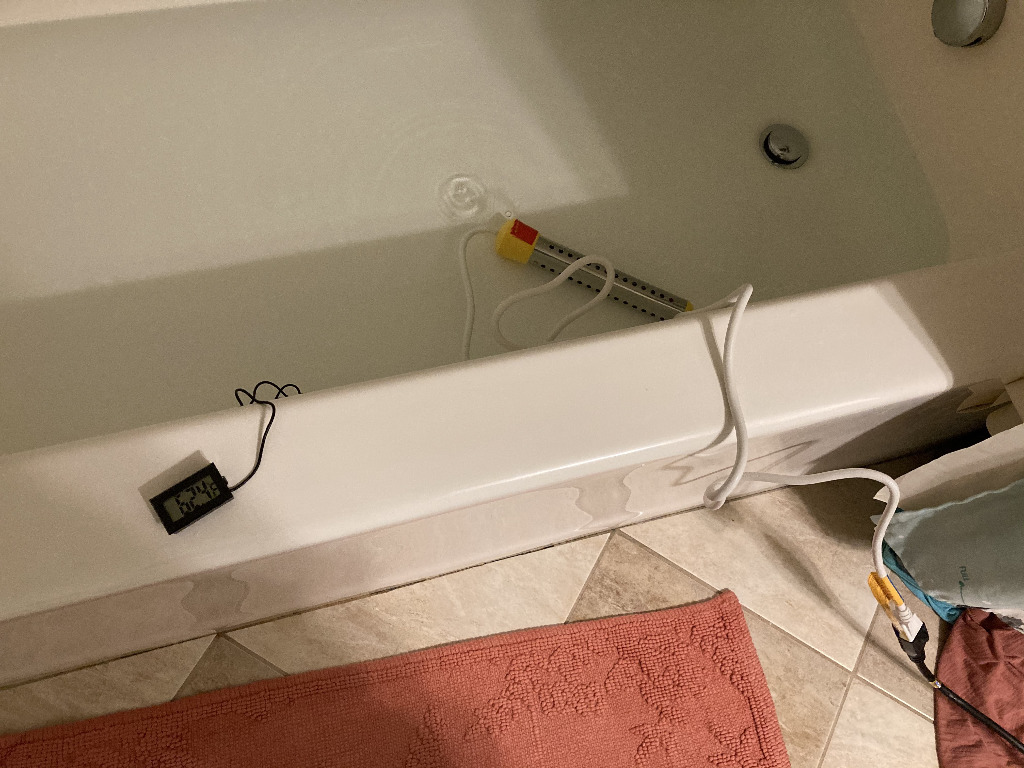On a Broken Water Heater
 Bathtub Immersion Heater
Bathtub Immersion Heater
A few weeks ago, on a Friday night, we found ourselves without any hot water and a cracked hot water heater tank. While we were able to schedule a plumber to replace the heater on Tuesday, this still left us without hot water for a few days. For washing dishes, it was pretty easy to boil a few kettles worth of water to get warm water, but that wouldn’t do for a bath.
Out of curiosity, I wanted to know how long it would take to get a bath to the purported optimal temperature of 45°C (112°F) per the WSJ.
We can calculate the amount of power in kWh required to raise the temperature from around 20°C to 45°C with the formula of P = (4.2 × L × Td ) ÷ 3600, where L is the volume and Td is the difference in temperature (C).
From our historical water data, we typically use 75L of water for a bath. Ignoring system losses, that comes out to 2.2 kWh to warm it up. That seems pretty reasonable. While we could get that from running the 3kW kettle for 43 or so minutes, that’s not convenient. What we need is something that we can continuously run, but we only have a 120V outlet there. Since we have to run it continuously, we have to derate 20% from 15A to 12A. That gets us 1440W, which doesn’t seem too bad.
I picked up an immersion heater around $20 that could output 1.4kW of power. Dividing out 2.2kWh by 1.4kW, that gives us 1.57 hours. A little long, but not too bad.
The only problem was getting cold water into the tub. When I tried turning on the tub mixer valve, no water came out. I tried backflowing some water from a different faucet and it worked fine. I was curious about why this was, and it turns out that it’s pretty typical to use a thermostatic mixing valve in the bath. This valve helps prevent scalding from sudden pressure loss, but also means you can’t run just cold water without some hot water pressure. Backflowing the hot water allows for the valve to operate.
With that all solved, the actual time to heat up the water came out to 1.66 hours for 75L, around a 6% loss and not too bad. It was a fun experiment, but I’m glad that we have hot water again.